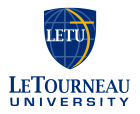Below is a summary of the abstract you submitted. Presenting author(s) is shown in bold.
If any changes need to be made, you can modify the abstract or change the authors.
You can also download a .docx version of this abstract.
If there are any problems, please email Dan at dar78@pitt.edu and he'll take care of them!
This abstract was last modified on March 12, 2024 at 7:28 p.m..

Bacteriophages (aka phages) are natural viral predators of bacterial hosts. Phage discovery and characterization is necessary, to help combat antibiotic-resistant infections which claim about 5 million lives globally every year. Phage Pygmy was isolated from a damp soil sample collected at 4:35 pm CDT at 32.464167 N, 94.726111 W at Letourneau University on August 22, 2023. After combining the sample with Middlebrook 7H9 Complete medium as part of the enriched isolation method, the spot test was utilized to determine phage presence. The presence of plaques indicated that our soil sample contained many phages that infected the host bacteria, Mycobacterium smegmatis Mc2 155. Choosing one plaque, we ran 10-fold serial dilutions through three 48-hour rounds of plating at 37 °C until we had adequately isolated the pure bacteriophage, which we named “Pygmy” because of its small plaques (average diameter 1.4 mm; range 0.9 – 2.2 mm, n = 10). The plaques were clear, with smooth edges. To get a high enough phage lysate volume and titer for DNA extraction, transmission electron microscopy (TEM), and archiving, eight webbed plates were prepared, and each was flooded with 5 ml of phage buffer, which was then filtered through 0.22 µm pore size filters. This process allowed us to reach a titer of 2.9 x 1010 PFU. After staining with 1% (wt/vol) uranyl acetate on a 300-mesh carbon–Formvar-coated copper grid, we sent Pygmy off for TEM imaging at the University of Arkansas for Medical Sciences. TEM image analysis revealed Pygmy to have a siphovirus morphotype, with an isometric capsid measuring ~60.6 nm (range 54.9 – 69.1 nm; n = 24) in diameter and a long, flexible, non-contractile tail measuring ~198.7 nm (range 173.0 – 249.5 nm; n = 24) in length. After extracting Pygmy’s genomic DNA from the lysate using the Promega Wizard DNA cleanup Kit and determining its DNA quality by 1% agarose gel electrophoresis, Pygmy’s DNA was sent off for Illumina sequencing at the University of Pittsburg. We annotated the genome using various bioinformatic software and databases, including DNA Master v5.23.6, GenMark v2.5p, Glimmer v3.02, HHPred, Phamerator, Starterator, BLASTp in NCBI GenBank and PhagesDB, DeepTMHMM. We also searched for tRNA using ARAGORN v1.2.41 and tRNAscan-SE v. 2.0 but found none. Using the gene content similarity (GCS) tool in PhagesDB and based on ≥35% GCS to other bacteriophage genomes in the database, Pygmy was assigned to subcluster P1. It has a genome length of 48612 base pairs, with a 12 bp 3' sticky overhang sequence CCCGCCCCCCGA and a 66.9% G+C content. Despite showing fairly clear plaques, genome sequence analysis data showed that phage Pygmy has a temperate life cycle, evidenced by the presence of key lysogeny-associated genes such as tyrosine integrase, immunity repressor, and excise. Pygmy adds to our inventory of phages as an asset in the potentially life-saving field of bacteriophage research.

